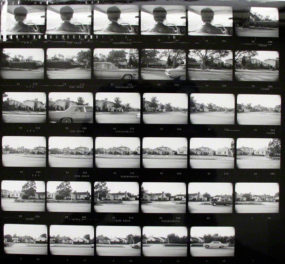We’re delighted to announce that the Getty Research Institute has released the Union List of Artist Names (ULAN)® as Linked Open Data (LOD). The Getty is committed to making our knowledge resources freely available to all, and this is another important milestone in that ongoing effort.
ULAN®, along with the other Getty vocabularies, is created and maintained by the Research Institute and used by art researchers all over the world. It is the third set to be released as Linked Open Data and follows the releases of the Art & Architecture Thesaurus (AAT)® and the Getty Thesaurus of Geographic Names (TGN)®. All three vocabularies are now available at vocab.getty.edu, free to download, share, and modify under an Open Data Commons Attribution License (ODC BY 1.0).
We hope that making our vocabularies available to the research community as Linked Open Data will have a transformative effect on the discipline of art history in general, and digital art history in particular.
About the Union List of Artist Names
The Union List of Artist Names (ULAN)® is a resource containing more than 650,000 names and biographical information for current and historical artists, architects, patrons, workshops, firms, museums, and other people and groups associated with the creation and history of art, architecture, and other works of cultural heritage. ULAN includes records for identified people, as well as for anonymous “hands.” It also includes links to related people and groups within ULAN, as well as links to places in the Getty Thesaurus of Geographic Names® (TGN) and to terms in the Getty’s renowned thesaurus of cultural heritage terminology, the Art & Architecture Thesaurus® (AAT).
Together the Getty vocabularies provide a suite of research resources covering a vast range of people, places, and artistic and conservation concepts. Because they serve as standard references for cataloguing, the Getty vocabularies are the conduits through which data published by museums, archives, libraries, and other cultural institutions can find and connect to each other. The work of three decades, the Getty vocabularies are living resources that continue to grow and expand, and to become increasingly multilingual and multicultural.
Why Linked Open Data?
Linked Open Data is a method of publishing datasets that structurally and technically encodes the semantic links. For example, it makes linkages between an artist and the places where he or she was born, worked, and died; between an artist and the works he or she produced; and between works and bibliographic references. Linked Open Data can be used by computers to aid searchers in navigating the vast, confusing universe of information on the Internet.
Linked Open Data is truly open; the semantically encoded data is published to the Internet cloud, so that it is available, free of charge and without any restrictions, to any institution or individual with the necessary technical capability to use it. Our LOD initiative is part of the Getty’s broader Open Content Program—a programmatic policy of making available not only digital images and other media, but also our vast research datasets.
The Research Institute’s ongoing Linked Open Data project is encoding every important data element and concept in our vocabulary databases as a unique Internet link. This allows every element to be processed semantically by computers, making the vocabularies a dynamic concept-based tool that will enhance and indeed revolutionize the retrieval of art historical and related information across cultures and technical platforms in a way that researchers have never experienced before.
An Example: Albrecht Dürer

Adoration of the Shepherds in Life of the Virgin, 1511, Albrecht Dürer. Woodcut, 16 1/8 x 11 1/2 in. The Getty Research Institute, 2011.PR.21.10
As just one example, take Albrecht Dürer. ULAN includes more than a dozen names for the artist in various languages and in historical documents—Albrecht Dürer, Albrecht Türer, Albertus Durerus, Albrekht Diurer, Alverto Dureño, アルブレヒト デューラー, 阿尔布雷希特·丢勒—allowing information associated with him to be found and associated regardless of which name is used in the original documents. His roles as painter, engraver, woodcutter, and mathematician may be linked to the Art & Architecture Thesaurus, providing multilingual access on these words (engravers, 雕版工, graveurs, grabadores).
The places where he was born, died, and active are linked to the Getty Thesaurus of Geographic Names, allowing access by variant names (Nürnberg, Nuremberg, Noremberg, Nuremberga), by its context in the broader Bavaria, and geospatial coordinates. The ULAN record for Dürer is linked to the records for his family members and those of his teacher Michael Wolgemut, students such as Hans Baldung and others, and patrons such as the Holy Roman Emperor Maximilian I. In a linked open world, these rich links may be used to weave a tapestry of information and discovery about artists, their works, and the times in which they lived and created.
Get Involved
We thank the members of the digital humanities community who have taken the time to make suggestions and to let us know how they are making use of our Art & Architecture Thesaurus and Getty Thesaurus of Geographic Names data. In an effort to enable even greater user involvement, we’ve recently established a public discussion forum. We hope the community will use this forum to ask questions and make suggestions related to the technical aspects of the publication. Usage examples are especially welcome and encouraged. To join the group, send an email to gettyvocablod+subscribe@googlegroups.com.
To follow the progress of Linked Open Data at the Getty Research Institute, see our Linked Open Data page.





Comments on this post are now closed.
Trackbacks/Pingbacks